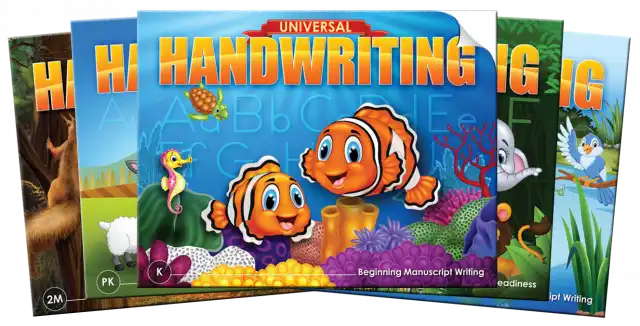
5 Tools to Encourage Good Handwriting
When you pick up a pen to jot down a quick note, write a check, or add an item to your shopping list, you probably don’t think much about what you’re writing. It’s automatic; from gripping the pen to forming the letters, your brain knows exactly what to do.
But do you remember what writing was like when you were a child? Whether manuscript or cursive, when a child learns to write for the first time, it takes a lot of practice before forming those letters becomes automatic. Good handwriting isn’t something that occurs naturally; it’s a skill that children have to be taught.
It’s important to provide students with models of letters, so if they’re unsure of how to form a letter they have accurate near-point and far-point references. These five handwriting teaching tools will help your students during handwriting lessons as well as when they write throughout the day.
Tools for Handwriting Lessons
In order for students to develop good handwriting, they have to be taught how to form the letters. Handwriting instruction is an essential part of this process. Simply asking students to practice writing letters without any instruction can lead to bad handwriting habits, since students may end up practicing a letter incorrectly.
Effective handwriting instruction can be accomplished in just 10-15 minutes, a few days a week. Try using handwriting workbooks and an animated alphabet to streamline the process:
1. Handwriting Workbooks
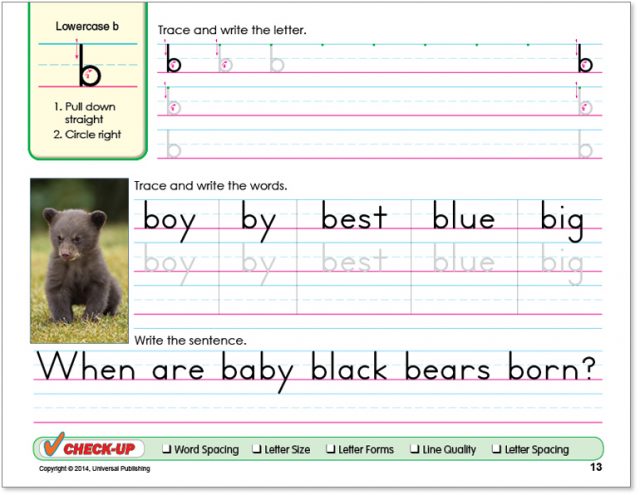
A good handwriting workbook can make a huge difference in your handwriting lessons. Instead of students simply writing a letter over and over on a blank piece of paper, a workbook includes models of all the basic strokes and letters, proper writing lines, and models for tracing. Additionally, using a workbook with word and sentence models allows students to see and practice correct letter and word spacing.
Handwriting workbooks also include letter formation instructions. These instructions include detailed stroke descriptions and numbered stroke arrows to show students how to form the letter.
Another important feature you’ll find in a handwriting workbook is self-evaluation reminders. It’s so important for students to evaluate their work so they can immediately recognize which letters need improvement and why.
2. Animated Alphabet
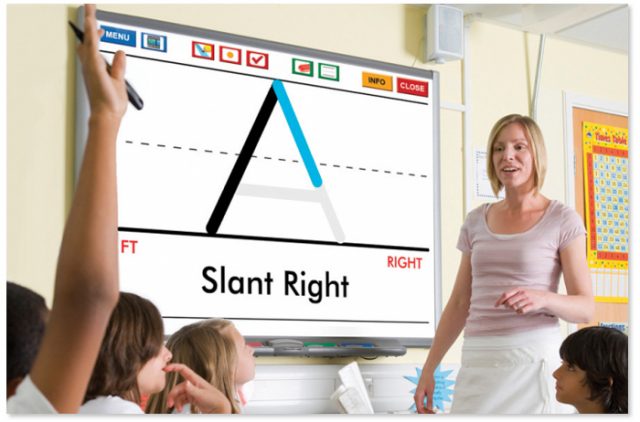
An animated alphabet is exactly what it sounds like – it demonstrates proper stroke-by-stroke letter and numeral formation. It’s also a great way to make handwriting fun and interactive!
AlphamationPlus, Universal Publishing’s exclusive animated alphabet, models all of the manuscript and cursive letters and numerals for you. That means you’re free to walk around the room while your students watch the letter being formed. You can also pause and restart the letter to point out a particular basic stroke or where the letter touches the writing lines.
AlphamationPlus also engages students with a multisensory experience: it shows the formation of the letter, verbalizes the strokes as they’re being made, and includes an interactive component for students to trace and write the letter themselves.
More Tools to Encourage Good Handwriting
When students close their handwriting books, that doesn’t mean they’re done writing for the day. As they write math problems, vocabulary words, spelling words, etc., they may need a gentle reminder of how to correctly form letters.
Placing these near-point and far-point letter references in your classroom will help students maintain legible handwriting all day long:
3. Alphabet Wall Strips
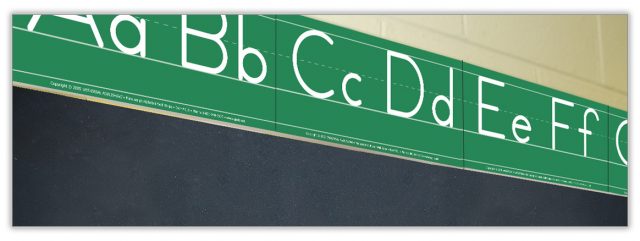
We’re all familiar with this classroom staple – the line of letters resting at the top of the chalkboard. Alphabet wall strips aren’t just useful for handwriting lessons; they’re the perfect reference for students as they write throughout the day.
Alphabet wall strips can be seen from anywhere in the classroom. Students can see the letters whether they’re writing at the chalkboard, at their desks, at a table for group work, or anywhere else in the room.
4. Alphabet Desk Strips
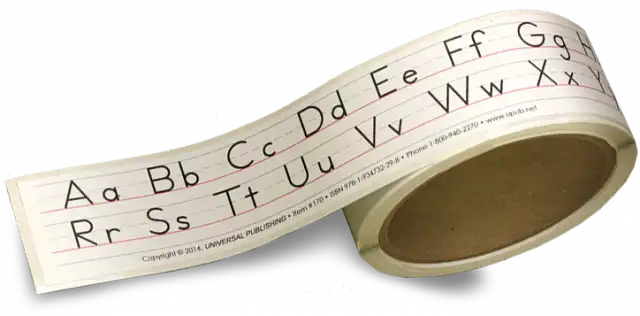
Alphabet desk strips are the near-point version of wall strips. Desk strips provide a close reference that students can easily see while they’re writing at their desks.
These desk strips are self-adhesive and include all of the capital letters and lowercase letters, as well as numerals and punctuation.
5. Alphabet Wall Posters
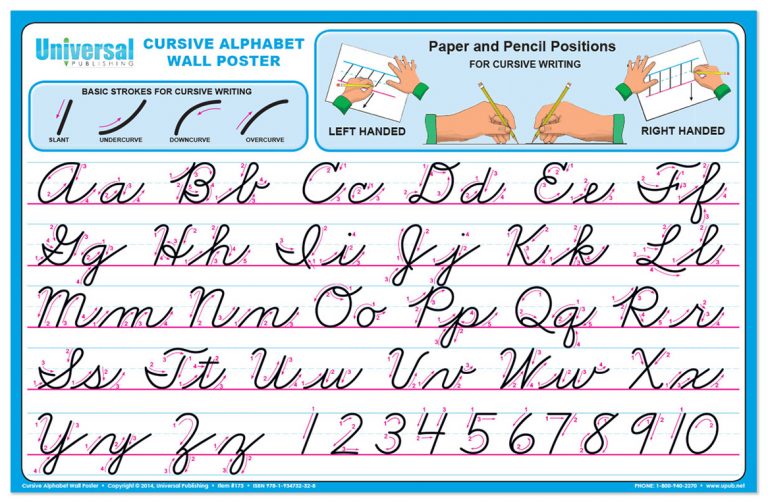
Wall posters are a little different than wall strips. They provide another far-point reference but include more than just letter models. You can find wall posters with arrows to guide letter formation, giving your students models that show exactly how to make the letters. We recommend using wall posters that also depict the basic strokes and proper pencil and paper position.
These tools will be especially helpful for students learning manuscript or cursive for the first time, but they’re a great reminder for students of all ages. Don’t forget: consistency is key! When you’re selecting handwriting books and alphabet models to add to your classroom, make sure they all show the same style of letters. Doing so will go a long way in helping your students build good handwriting skills!

